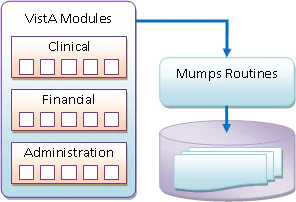
Traditionally, hand written paper based health records were managed by organizing them in files and cabinets. With computers becoming common, hospitals and other health providers switched over to electronic files. Since these records were maintained locally, sharing them with others was not possible with ease. This inefficiency often lead to what is known as “waste in healthcare”. Mentioned below are a few instances of the same
- An employee moving from room to room and building to building to get a patient’s medical information
- A doctor waiting for a patient’s medical history or a lab results
- A nurse waiting for the availability of prescribed drugs from a pharmacy
- A patient waiting for an appointment with a doctor
All these wasted delays then get transformed into errors in medical procedures,which are, inaccuracy due to delay in diagnosis, failure to act timely on test results, failure to provide preventive treatment and failure of proper communication. These failures are deadly and have the potential to result in loss of thousands of lives and billions of dollars. Therefore, governments and healthcare providers across the world are defining standards for implementing and sharing electronic health records.
There are several off-the-shelf proprietary EHR solutions out there, but these are very expensive and are controlled by the vendors. Recently, one of the sophisticated medical centre reported huge loss and failures after implementation of a proprietary EHR system. with an open source project, the benefit lies in the fact that it offers a complete control of logic and data management with a bonus of almost no cost of ownership.
VistA (Veterans Health Information Systems and Technology Architecture) was developed by the US Department of Veterans Affairs for over three decades and a large part of it was made available in the public domain through the Freedom of Information Act (FOIA). It is widely believed to be the largest integrated Health Informatics platform in the world. WorldvistA is an open source implementation of VistA and is intended for use in healthcare facilities outside the VA.
WorldvistA consists of two parts: A database server and a collection of functional modules. The database is a schema-less (or NoSQL) high throughput key-value engine optimized for transaction processing. It is called GT.M or Mumps or simply M. GT.M is an implementation of the Standard M programming system (M = MUMPS = Massachusetts General Hospital Utility Multi-Programming System). It consists of a language subsystem and a database subsystem and these two are closely integrated.
The most salient feature of M is its ACID compliance and ability of handling huge datasets in multi Terabytes range. This is what makes WorldvistA stand apart from the bunch of other open source implementations. A high level system architecture of this is depicted in the following figure.

Fig1. – EHR System Architecture based on VistA platform
The VistA modules interact with different subroutines written in M. These subroutines are responsible for storing and retrieving data from database. The database engine in Mumps is called Fileman. It organizes the data into fields, records and files and manages a data dictionary along with other programming utilities.
In this blogpost we have introduced the VistA Platform for developing an efficient and cost effective EHR system. Next in the series we will discuss:
- What are issues with the vanilla model of VistA. Can we fix them?
- How Vista platform can be configured to perform specific clinical functions?
- How can we create a system to leverage the maturity of VistA Platform and at the same time conforming to all the stages of Meaningful Use requirements?





